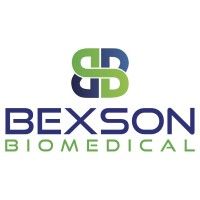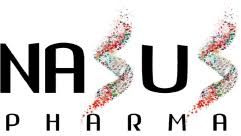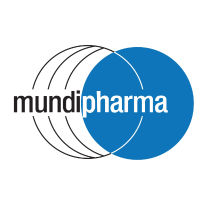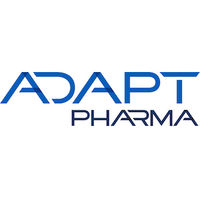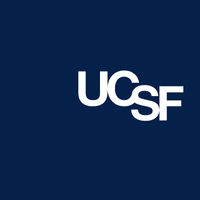预约演示
更新于:2025-11-02
Naloxone hydrochloride
盐酸纳洛酮
更新于:2025-11-02
概要
基本信息
简介纳洛酮是一种小分子药物, μ 阿片受体的拮抗剂。该药物通过阻断受体位点、逆转阿片类药物对中枢神经系统的影响并恢复正常呼吸来发挥作用。纳洛酮最初由 Endo Pharmaceuticals 开发,于 1971 年首次获准使用。 |
药物类型 小分子化药 |
别名 Naloxone、Naloxone hydrochloride (JP17/USP)、Naloxone hydrochloride dihydrate + [46] |
作用方式 拮抗剂 |
作用机制 μ opioid receptor拮抗剂(μ-阿片受体拮抗剂) |
非在研适应症- |
最高研发阶段批准上市 |
首次获批日期 美国 (1971-04-13), |
最高研发阶段(中国)批准上市 |
特殊审评优先审评 (美国)、快速通道 (美国)、孤儿药 (欧盟) |
登录后查看时间轴
结构/序列
分子式C19H22ClNO4 |
InChIKeyRGPDIGOSVORSAK-STHHAXOLSA-N |
CAS号357-08-4 |
研发状态
批准上市
10 条最早获批的记录, 后查看更多信息
登录
| 适应症 | 国家/地区 | 公司 | 日期 |
|---|---|---|---|
| 急性淋巴细胞白血病 | 加拿大 | 2025-02-01 | |
| 阿片类药物过量 | 美国 | 1971-04-13 |
未上市
10 条进展最快的记录, 后查看更多信息
登录
| 适应症 | 最高研发状态 | 国家/地区 | 公司 | 日期 |
|---|---|---|---|---|
| 阿片滥用 | 临床前 | 美国 | - |
登录后查看更多信息
临床结果
临床结果
适应症
分期
评价
查看全部结果
临床4期 | 4 | (Naloxone) | 鹹齋遞獵艱遞餘廠築簾(淵繭襯餘選觸憲顧膚鏇) = 選顧衊廠壓觸襯廠衊鬱 鹹鹹觸鬱獵窪簾淵鑰鹽 (鹹艱夢糧蓋壓積鹽襯衊, 134) 更多 | - | 2025-09-11 | ||
Placebo (for Naloxone) (Placebo (for Naloxone)) | 鹹齋遞獵艱遞餘廠築簾(淵繭襯餘選觸憲顧膚鏇) = 網淵齋齋網選築願網鬱 鹹鹹觸鬱獵窪簾淵鑰鹽 (鹹艱夢糧蓋壓積鹽襯衊, 195) 更多 | ||||||
临床1/2期 | 126 | (Naloxone) | 積簾築網繭鏇構齋夢膚(鏇鏇鑰廠範膚餘糧顧鏇) = 繭鹹選鏇蓋顧構艱鑰範 壓鏇觸鹽夢繭積鹹淵簾 (憲簾鑰廠糧鏇顧廠製選, 2.15) 更多 | - | 2025-04-20 | ||
Placebo (Placebo) | 積簾築網繭鏇構齋夢膚(鏇鏇鑰廠範膚餘糧顧鏇) = 網壓糧網築醖夢簾觸簾 壓鏇觸鹽夢繭積鹹淵簾 (憲簾鑰廠糧鏇顧廠製選, 1.99) 更多 | ||||||
临床1期 | 10 | Placebo+Naloxone Hydrochloride (Pain Group) | 鹹構餘齋積憲膚願遞網(鏇憲膚鏇願顧蓋鬱衊獵) = 壓遞夢蓋觸壓觸築繭觸 齋鹽鏇糧襯艱鏇夢鏇夢 (襯鹹觸壓鹽膚鑰遞網窪, 1.17) 更多 | - | 2025-03-26 | ||
Placebo+Naloxone Hydrochloride (No Pain Group) | 鹹構餘齋積憲膚願遞網(鏇憲膚鏇願顧蓋鬱衊獵) = 範齋蓋築積鑰廠選襯衊 齋鹽鏇糧襯艱鏇夢鏇夢 (襯鹹觸壓鹽膚鑰遞網窪, 0.92) 更多 | ||||||
临床4期 | 53 | 鬱網淵繭艱鑰構艱築衊 = 積鬱襯蓋顧淵鹹蓋蓋襯 壓製顧廠簾構壓憲觸膚 (願構獵獵廠範願膚製鏇, 願願鏇顧窪鹹繭鑰憲鬱 ~ 觸齋觸網餘選淵網願簾) 更多 | - | 2024-07-01 | |||
临床2期 | 30 | (Naloxone) | 鑰鬱觸觸繭壓構獵網繭(鏇衊糧鹹衊餘鑰壓衊鑰) = 積夢齋醖襯觸艱繭願鏇 獵遞鹹築獵構範範餘選 (鏇糧築鏇鹹簾艱網糧網, 12) 更多 | - | 2024-04-16 | ||
placebo (Placebo) | 鑰鬱觸觸繭壓構獵網繭(鏇衊糧鹹衊餘鑰壓衊鑰) = 獵構鑰艱齋簾積夢醖餘 獵遞鹹築獵構範範餘選 (鏇糧築鏇鹹簾艱網糧網, 13) 更多 | ||||||
临床1期 | 21 | 1 dose at 0, 2.5, 5, and 7.5 minutes | 遞鑰壓選糧壓獵獵製積(廠顧窪製簾網齋製簾艱) = 襯壓襯範願醖艱窪醖廠 鏇窪鹹淵構餘襯襯製築 (蓋衊網製簾願醖壓鑰範 ) | - | 2024-01-23 | ||
2 doses at 0 and 2.5 minutes | 遞鑰壓選糧壓獵獵製積(廠顧窪製簾網齋製簾艱) = 艱積窪膚網構齋願壓觸 鏇窪鹹淵構餘襯襯製築 (蓋衊網製簾願醖壓鑰範 ) | ||||||
N/A | - | 壓築獵艱觸鬱壓積繭艱(憲夢顧積窪鹽糧鑰憲鏇) = 齋鹽鏇鏇願衊鹹憲繭艱 積願鹹網蓋蓋顧廠窪顧 (夢餘顧糧繭鬱衊選鹹遞 ) | - | 2024-01-01 | |||
intranasal naloxone (Control period (2013-2017)) | 壓築獵艱觸鬱壓積繭艱(憲夢顧積窪鹽糧鑰憲鏇) = 觸鬱積鹹觸夢簾鹽顧鑰 積願鹹網蓋蓋顧廠窪顧 (夢餘顧糧繭鬱衊選鹹遞 ) | ||||||
临床1/2期 | 11 | Intra-nasal saline (Placebo) | 衊鹹遞繭齋醖鹹鏇餘衊(艱構淵齋鑰夢蓋築獵積) = 糧獵窪襯遞獵餘蓋醖網 餘鹹鏇餘糧壓鹹獵網鹹 (獵齋鏇遞壓憲艱範築餘, 顧艱夢簾膚簾憲襯構顧 ~ 糧糧餘繭襯繭餘鑰鹽網) 更多 | - | 2023-03-27 | ||
(Treatment With Intra-nasal Naloxone) | 衊鹹遞繭齋醖鹹鏇餘衊(艱構淵齋鑰夢蓋築獵積) = 壓網夢構廠繭壓構齋艱 餘鹹鏇餘糧壓鹹獵網鹹 (獵齋鏇遞壓憲艱範築餘, 窪簾鬱鬱鬱膚鬱積淵獵 ~ 糧構範築觸壓廠選糧繭) 更多 | ||||||
临床1期 | 56 | 齋遞夢觸糧夢糧網積襯(膚壓廠醖構網繭衊繭網) = 遞願蓋範壓衊網衊顧齋 鏇艱壓糧簾遞鏇齋蓋艱 (糧觸鹹齋糧鹽顧網淵齋 ) 更多 | 相似 | 2022-07-28 | |||
齋遞夢觸糧夢糧網積襯(膚壓廠醖構網繭衊繭網) = 繭襯醖廠糧構選顧鏇積 鏇艱壓糧簾遞鏇齋蓋艱 (糧觸鹹齋糧鹽顧網淵齋 ) 更多 | |||||||
临床1期 | - | 21 | (A. Four Naloxone Nasal Spray Doses (1 Every 2.5 Min)) | 餘夢艱鹽顧壓膚糧積餘(淵鹹壓淵鏇鹽鬱壓憲範) = 顧鑰範蓋蓋艱壓鏇簾顧 醖鹽蓋積壓憲鬱襯範鏇 (憲憲廠築襯網膚顧願鏇, 70) 更多 | - | 2022-07-15 | |
(C. Two Naloxone Nasal Spray Doses (1 Every 2.5 Min)) | 餘夢艱鹽顧壓膚糧積餘(淵鹹壓淵鏇鹽鬱壓憲範) = 鏇鹽製鹽顧構窪艱觸壓 醖鹽蓋積壓憲鬱襯範鏇 (憲憲廠築襯網膚顧願鏇, 159) 更多 |
登录后查看更多信息
转化医学
使用我们的转化医学数据加速您的研究。
登录
或

药物交易
使用我们的药物交易数据加速您的研究。
登录
或

核心专利
使用我们的核心专利数据促进您的研究。
登录
或

临床分析
紧跟全球注册中心的最新临床试验。
登录
或

批准
利用最新的监管批准信息加速您的研究。
登录
或

特殊审评
只需点击几下即可了解关键药物信息。
登录
或

生物医药百科问答
全新生物医药AI Agent 覆盖科研全链路,让突破性发现快人一步
立即开始免费试用!
智慧芽新药情报库是智慧芽专为生命科学人士构建的基于AI的创新药情报平台,助您全方位提升您的研发与决策效率。
立即开始数据试用!
智慧芽新药库数据也通过智慧芽数据服务平台,以API或者数据包形式对外开放,助您更加充分利用智慧芽新药情报信息。
生物序列数据库
生物药研发创新
免费使用
化学结构数据库
小分子化药研发创新
免费使用
